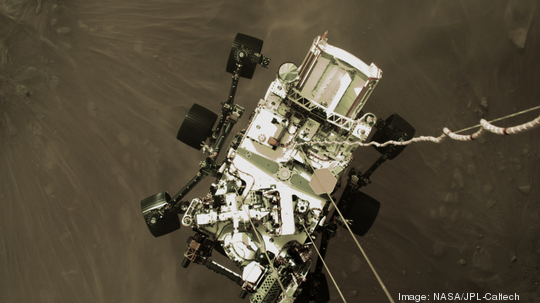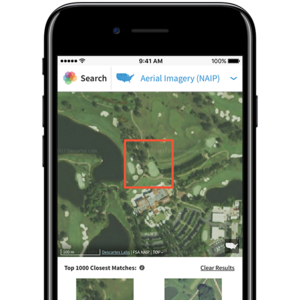
When NASA's Perseverance rover touched down on Mars Thursday, the car-sized machine brought some New Mexico-built technology along with it.
Two of the machine's various scientific instruments were developed in part at Los Alamos National Laboratory, according to a LANL release.
One of those pieces of equipment is called a "SuperCam." The equipment has a laser that can "zap" rocks as far as 25 feet away, allowing for the study of rock samples that cannot be reached with Perseverance's robotic arm. The apparatus will help identify elements in the martian dust that could be harmful to people, according to LANL.
SuperCam will also "listen to the snap of the laser impacts" and give insight on the rocks' physical properties. The instrument was invented at LANL in collaboration with the French space agency and other academic partners, the release says.
The second instrument aboard the Mars rover is called "SHERLOC." The tech sits on the arm of the rover and will use laser-induced fluorescence to search for molecules that may be signs of life. The detector and electronics in SHERLOC were built at LANL.

LANL also helped develop Perseverance's power source, the release says. The system is a type of radioisotope thermoelectric generator, which is "essentially a nuclear battery that uses heat from the natural radioactive decay of plutonium-238 to generate electricity,” said LANL Program Manager Jackie Lopez-Barlow in a statement.
The intergalactic event came on the tail end of another space-related announcement, this one from a New Mexico company.
Space Veggies
Los Alamos-based advanced materials company UbiQD announced late last month that it published the results of the first phase of a NASA-funded study. The company offers a product called UbiGro, which the firm says helps plants use sunlight more effectively using "quantum dot" technology.
The results of the study were published in an open-access Nature Research Journal called communications biology on Jan. 27. The project demonstrated a 13% biomass improvement for red romaine lettuce using UbiGro, as well as a 9% increase for a different red-light emitting film.
In 2018, UbiQD was awarded the first phase contract as part of a mission by NASA to advance capabilities for food production in space. NASA later awarded UbiQD a second phase contract for "exploring new light recipes," according to the company.
UbiQD, founded in 2014, announced a $7 million investment round in December. The round included $4.5 million in new investment plus a previously secured convertible note, founder and CEO Hunter McDaniel previously told Business First. The capital was to be used to scale the rollout of UbiGro, Business First reported.




